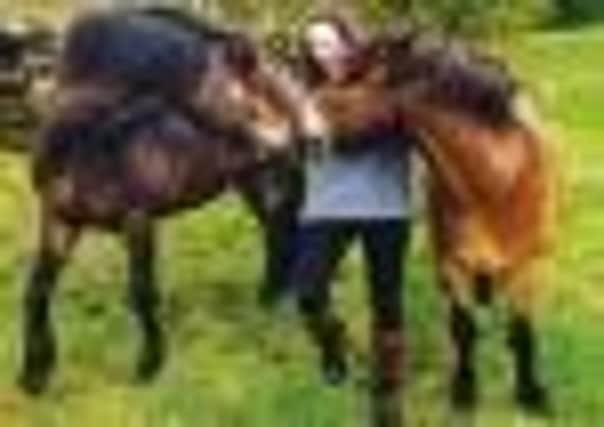Persecuted Exmoor ponies trot back from the brink


Now their numbers have soared again thanks to a landmark project at a Scottish university which this week celebrates its own Diamond Jubilee.
For the past six decades, Edinburgh University’s Exmoor Pony Trekking Society has raised and sold hundreds of ponies to keep the breed alive. Student vets at the university have cared for the animals ever since they were brought to Scotland in 1952 and generations of vets have used them to train in animal anatomy.
Advertisement
Hide AdAdvertisement
Hide AdClare Carrigan, a vice-president of the society, said: “The story of how these incredible animals came to Scotland is quite amazing and they are now very much part of the university’s culture and Scottish history.”
Their survival is largely down to the initiative of two horse lovers – a parish priest’s daughter from Exmoor and an Edinburgh University professor – who set up a society to safeguard the breed and, in the process, fell in love and got married.
The society was started in 1952 by Jimmy Speed, who was Professor of Anatomy at the University. A friend who worked at London’s British Museum then put him in touch with Mary Etherington, a parish priest’s daughter who had inherited a herd of Exmoor ponies from her family. Etherington took her herd of 20 ponies to Edinburgh on the train and donated them to the university’s vet school in order for them to care for and research her beloved Exmoors. Within a year she and Speed had married.
Carrigan said: “The herd was the first to be based outside of Exmoor. At the time there were only 40 ponies left as hundreds of them had been shot at by soldiers in training during the war and many more had been stolen from fields and eaten. They really were very close to being wiped out.
“Student vets fell in love with them and used them as part of their training and soon set up a trekking society to let locals spend the day learning more about these wonderful animals.
“That was 60 years ago and over the years the society has raised and cared for hundreds of ponies. Many of them have been sold, some as far afield as Germany and Canada, and there are now around 2,000 ponies in existence.”
The group is holding anniversary treks throughout this month when participants will be told about the herd’s history. The society also plans to publish a book to mark the animals’ Diamond Jubilee year.
The ponies are taken out most weekends by volunteer students, who take members of the public along to let them learn about the breed and help to groom and feed them.
Advertisement
Hide AdAdvertisement
Hide AdThe not-for-profit organisation looks after 12 ponies, which are kept outside all year round near Dollar.
The society has now invited Princess Anne, the chancellor of Edinburgh University, to visit the current herd to witness the success of the project. The Princess Royal first visited the society’s stables in 1980 when she took part in a trek on one of the herd.
Carrigan, of Edinburgh, said: “People who come on the treks fall in love with them. You can’t help it. They all have their own personalities and are very cheeky and full of fun.
“They are pretty easy to manage and very hardy; they have to be out in the Scottish winters every year. They get the odd apple but really survive off the grass in their fields.”
Exmoor Ponies are described as the “4 x 4” of horses, given their resilience to the elements. The ancient native British breed has adapted to living on the moor. Their trademark bulging “toad eyes” keep out the elements and short ears reduce heat loss. Their coats, manes and tails are waterproof and they have a distinctive, big belly so they can eat large amounts of nutrient-poor heather and grass to obtain their daily energy supply.
Despite the society’s success, the Exmoor Pony is one of the world’s rarest animals and is classified as endangered by the Rare Breeds Survival Trust.
Emily Hale, treasurer of the society, said: “The university has done a fantastic job in helping keep these ponies alive. We hope that this year many more people come and visit these amazing animals and get involved in looking after them to make sure Scotland can rightly claim to have helped save the Exmoors.”
For information on the society, go to www.exmoor ponytrekking.co.uk